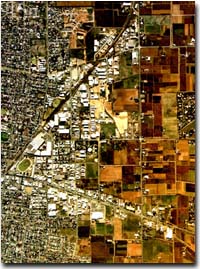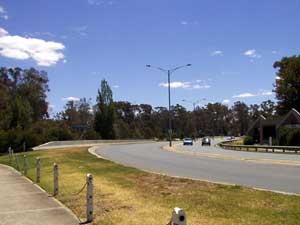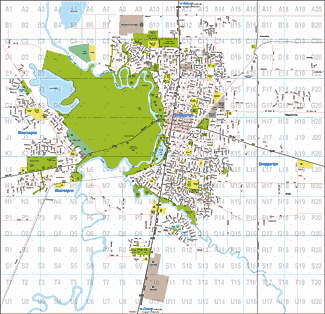
An Aerial Image of Shepparton, a city with adjacent orchards.

Road toward Mooroopna curves past McGuires Punt

Shepparton Streets and environs


An Aerial Image of Shepparton, a city with adjacent orchards.

Road toward Mooroopna curves past McGuires Punt

Shepparton Streets and environs

Shepparton is a large mulitcultural town situated on the Goulburn River 180kms north of Melbourne. The Goulburn River provided the vital resource of water in the region and was instrumental in the settlement of indigenous peoples and later inhabitants
McGuires Punt was the original name for the town now known as Shepparton. Mr Patrick McGuire provided a punt for passengers to cross the Goulburn River. By 1841, squatters occupied vast 'runs' in the area, and there began the agricultural development of the region.
Mr Sherbourne Sheppard, an Irishman who immigrated to Australia in 1841, arrived in the Goulburn Valley in 1843, taking up the large run of Tallygaroopna. Several years later Mr Sheppard left for England, and on his return he found his property and stock had been disposed of to meet his outstanding committments. Determined to regain all that was his, Mr Sheppard eventuall repossessed his land by force, in what became known as the "Siege of Tallygaroopna". It was this event that probably changed McGuires Punt toi Sheppards's Town, and the lazy Australian accent made the change to Shepparton.
From the time of the First World War until after the Second World War, significant numbers of Albanian, Greek, Yugoslav and Italian people arriving in Australia made their way up to the Goulburn Valley, where they took up fruit and vegetable growing. Their arrival gave the Shepparton area a cosmopolitain energy adding diversity to the area, which is also home to the largest indigenous population (Koories) in Victoria outside Melbourne.
Shepparton is home to large fruit orchards and dairy farms, thanks to the irrigation system that was established in 1912. The irrigation system has enabled the establishment of a range of agricultural industries in the area: tomatoes, strawberries, kiwi and nashi fruit, sunflower and other vegetables. The non-irrigated areas are highly productive with cereal crops of wheat, oats and barley. In addition, sheep (for wool) prime lambs and cattle are grazed as well as the establishment of some very large piggeries. Shepparton has evolved into a bustling regional center providing a diverse range of retail shops, over 80 manufacturing establishments, the Driver Education Centre of Australia and a large number of restaurants.